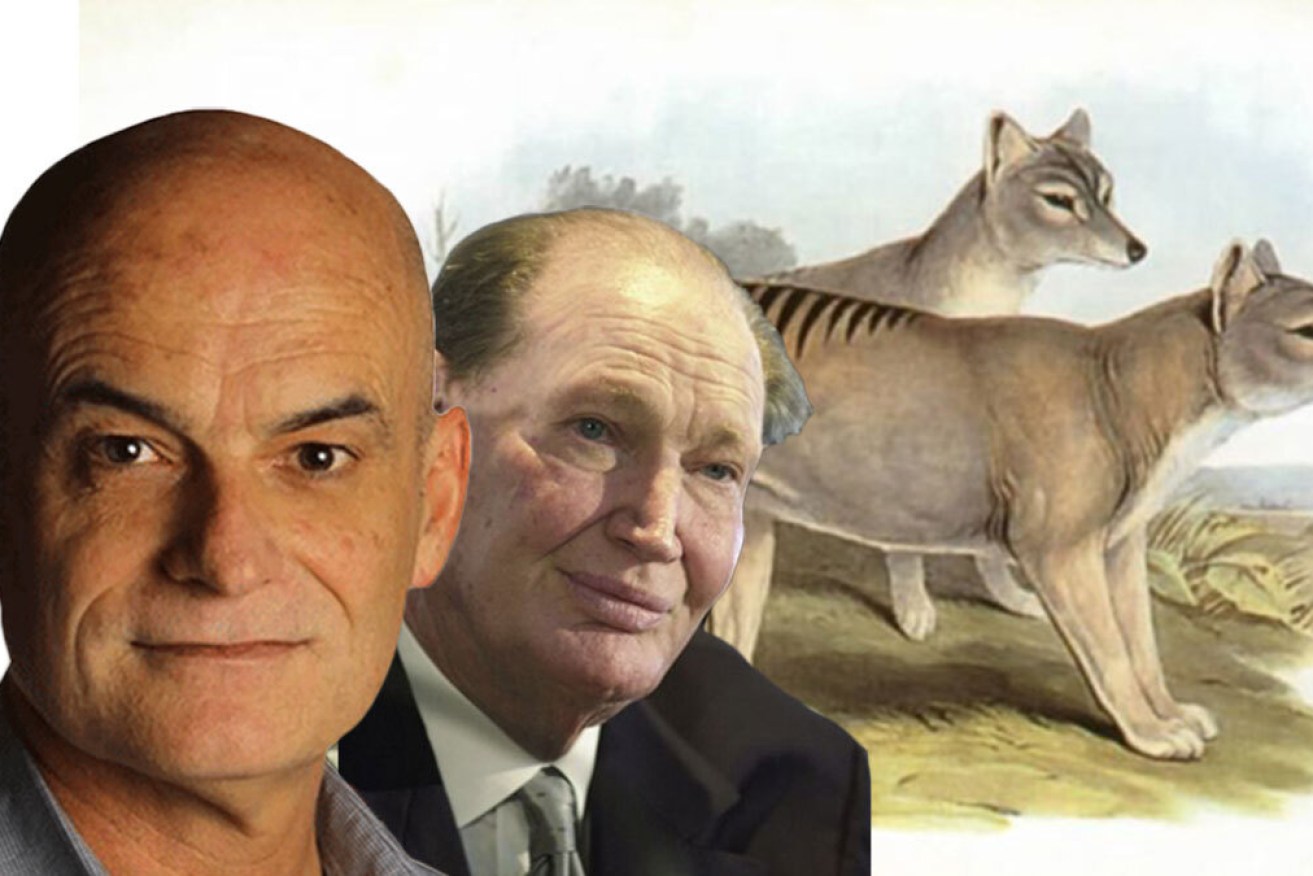Garry Linnell: The mogul, the tiger, and the million-dollar bet that never paid out


Remembering the time when Garry Linnell asked Kerry Packer for $1 million for a Tasmania Tiger reward. Photo: TND
Kerry Packer stared at me, his eyes cold and hard and full of suspicion.
He grimaced. Then he leaned back in his chair and took a deep drag on his cigarette.
Suddenly his nostrils flared and out of them shot a volcanic plume of smoke so thick his face was briefly lost from view.
I couldn’t see him.
But deep within that dense white cloud of tobacco fumes came the low growl of a throat being cleared, followed by a cough. And then another.
I had just asked Packer to put up more than $1 million for the capture of a live Tasmanian tiger. Perhaps the billionaire businessman was starting to choke.
But when the air cleared, a smile was forming on his chapped lips and those piercing eyes were starting to gleam.

The Bulletin front page with the $1.25 million reward. Photo: Garry Linnell
“So, this million bucks you want…” he said. “What chance I’ll lose it?”
It was early 2005. Packer would be dead by the end of the year.
His skin was sallow and almost rice paper thin and those once-fleshy jowls and jutting square jaw had finally surrendered to gravity.
But that ferocious gambler inside him, the one who had tormented the world’s biggest casinos and left a trail of normally unflappable croupiers shaking and soaked in sweat, was alive and well.
I was the editor of Packer’s magazine The Bulletin.
I’d just told him I wanted to offer a $1.25 million reward for the capture of a thylacine, the legendary marsupial believed to have fallen extinct more than 70 years earlier.
It was a publicity stunt, of course.
The Bulletin had been struggling financially for years and with next to no marketing budget, publicising the magazine’s 125th anniversary meant making a loud bang without a buck to spare.
Packer understood that. But the high roller inside him couldn’t help wanting to know the odds.
Your money is safe, I assured him. It was impossible the tiger still existed – scientists claim you need a breeding population of at least 50 and maybe hundreds more for an animal species to avoid extinction.
But just in case the tiger had somehow defied the laws of nature, I told Packer the lawyers had spent weeks working on the complex terms and conditions attached to the reward.
The degree of difficulty was huge.
Anyone trying to claim the cash would have to deliver a live specimen to The Bulletin office – without breaking any national or state laws.
“And even if they do turn up with one, think about how much it will be worth,” I said. “We pay them a million dollars and we suddenly own the world’s most valuable animal. Who can put a price on that?”
Packer liked it. “Do it,” he said.
Then he pressed a buzzer on his desk to summon his personal assistant to bring another cigarette, and with a cursory wave dismissed me from his presence.

The late Kerry Packer. Photo: AAP
I’m reminded of that meeting with Packer and the subsequent faux controversy caused by The Bulletin’s reward because this month is a pretty solemn one for those who regret the loss of the thylacine – and even those who believe it still stalks the woodlands and forests of Tasmania.
It was on the night of September 7, 1936 that Benjamin, the last known Tasmanian tiger, sat down shivering on a cold slab of concrete in his enclosure at a Hobart zoo and slowly died of exposure.
The door to his warm shelter nearby had been accidentally closed.
Earlier this year the National Film and Sound Archive released 21 seconds of previously unseen footage of Benjamin pacing his enclosure at the Beaumaris Zoo a year before his death.
It’s a bleak and depressing piece of film that shows the normally shy and nocturnal animal stalking the cracked concrete floor, his handlers banging and shaking the wire mesh in an effort to make him parade in front of the camera.
The voice-over belongs to one of those typical fast-talking, pinched-nose cinema newsreel narrators of the era, the sort of commentator you could easily imagine describing Don Bradman smacking another wayward English ball to the boundary.
Accompanied by a tinny jazz soundtrack, he introduces us in a staccato fashion to “The Tasmanian Tiger … Easily distinguished by his straight, unjointed tale … is also a dangerous opponent … Though … like the devil… is now very rare … being forced out of its natural habitat by the march of civilisation. This is the only one in captivity in the world.”
But as they dragged Benjamin’s stiff corpse from that same enclosure the morning after his death, a new myth was being born.
In the decades since, the thylacine has gone the way of the UFO and Bigfoot, choosing only to make rare and careful appearances in front of people who specialise in taking blurry, out of focus photographs.
For an animal that leaves no tracks, its footprint is bigger than ever.

The last thylacine died in the old Hobart Zoo, now closed, on September 7, 1936. Photo: Getty
A month rarely passes without a reported sighting.
A Facebook group called the Thylacine Awareness Group of Australia has almost 8000 members.
Screen Australia has approved a $50,000 grant to fund a new documentary about the search to prove the Tiger still exists.
And a year never seems to go by without a new claim about scientists planning to bring the species back to life using DNA.
The Bulletin’s $1.25 million reward for the capture of a tiger caused a predictable stir when it was announced.
Politicians and scientists with no sense of humour denounced it as a cheap stunt (err, hello, you really thought it was serious?) and the resulting brouhaha gave the magazine more than a million dollars in free publicity.
But despite a thick layer of scepticism – and the fear of a wrathful Packer – I always hoped someone might turn up with one of Benjamin’s descendants and claim the reward.
They never did, of course. And they never will.
Just like Kerry Packer and The Bulletin, the Tiger is long gone.
You can safely bet on it.








